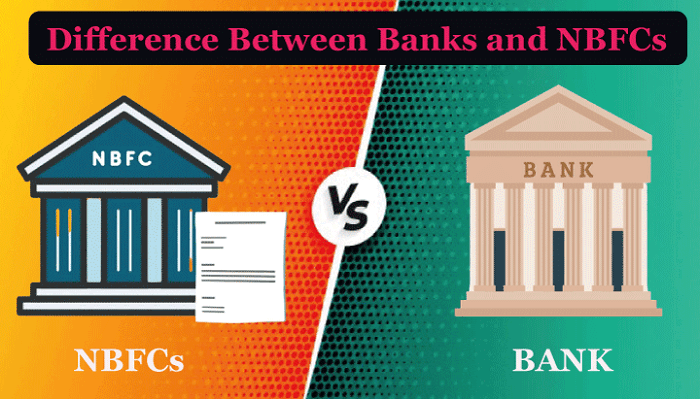Difference Between NBFC and BankThere are many financial institutions that exist in the economy of a nation to support different businesses to flourish and financial inclusion. In today's article, we will see the difference between the two important financial institutions NBFC (Non-Banking Financial Company) and a bank. NBFCA financial organization known as a non-banking financial company (NBFC) offers financial services to its clients without possessing a banking license. According to the rules of the Reserve Bank of India Act, 1934, these institutions are governed by the RBI and registered under the Companies Act, 1956/2013. NBFCs are involved in a range of financial activities, including selling hire purchase services, accepting deposits, issuing debentures, and providing loans and credit facilities. They are essential to India's financial system because they meet the needs of people, small enterprises, and corporations that might not have access to regular banking services. Being more adaptable in their lending practises than banks is one of NBFCs' main advantages over banks. Companies are free to create and alter loan products as they see fit in order to cater to the unique requirements of their customers. For people and small enterprises that might not match the strict requirements of traditional banks, NBFCs are a preferred option. NBFCs can be categorized into two types: Deposit-taking NBFCs and Non-Deposit-taking NBFCs. Deposit-taking NBFCs can accept deposits from the public and have to comply with certain rules and regulations laid down by the RBI. They are further classified into three categories based on the size of the deposits they accept:
Non-Deposit-taking NBFCs do not accept deposits from the public and, therefore, are not subject to the same regulations as deposit-taking NBFCs. They can provide credit facilities, offer leasing services, and provide other financial services. To operate as an NBFC, a company must have a minimum net owned funds (NOF) of Rs. 2 crores. The NOF is the total amount of capital contributed by shareholders, free reserves, and other instruments.The RBI has also prescribed certain other rules and regulations for the registration and functioning of NBFCs. BankA bank is a financial institution that provides various financial services to its customers, including deposit accounts, loans, and other financial products. Banks play a vital role in the economy, as they are responsible for providing the necessary capital to businesses and individuals, allowing them to invest and grow. Banks operate by taking deposits from their customers and lending out the money to borrowers. They earn a profit by charging interest on loans and investments while paying interest to depositors. Banks are regulated by government authorities, typically a central bank, which sets the rules and regulations for the industry. In the United States, for example, the Federal Reserve oversees the banking system and sets monetary policy to maintain stability in the economy. In addition to deposit accounts like checking and savings accounts, banks provide a wide range of services to their clients. Customers can save their funds in these accounts and receive interest on their deposits while doing so in a safe and secure environment. Aside from loans and credit cards, banks also provide credit products that let clients borrow money for a variety of uses. Banks also provide investing services, including stock, bond, and mutual fund trading. Customers are given the option to invest their money through these services in a variety of financial assets, giving them the chance to profit from their initial investment. In recent years, the banking industry has undergone significant changes due to advances in technology and increased competition from non-bank financial institutions. Online banking has become more popular, enabling customers to access their accounts and conduct transactions from their computers or mobile devices. Difference Between NBFC and BankNon-Banking Financial Companies (NBFCs) and Banks are both financial institutions that offer financial products and services to customers. However, there are some key differences between the two: 
Overall, NBFCs and banks both play important roles in the financial ecosystem, providing access to capital and financial services to individuals and businesses. While there are similarities between the two, such as their regulation by the RBI and their provision of loans and other financial services, there are also key differences, such as their ability to accept deposits and issue cheques, their size and scope of services, and their risk profiles and lending policies. Understanding these differences can help individuals and businesses make informed decisions about which institution to approach for their financial needs. Here are some of the uses of Banks and NBFCs:Uses of Banks
Uses of NBFCs
ConclusionOverall, both banks and NBFCs provide a range of financial services, catering to the needs of different individuals and businesses. While banks offer a wider range of services, NBFCs are often more specialized and can offer more flexible lending policies. Understanding the uses of each can help individuals and businesses make informed decisions about which institution to approach for their financial needs.
Next TopicDifference between
|
 For Videos Join Our Youtube Channel: Join Now
For Videos Join Our Youtube Channel: Join Now
Feedback
- Send your Feedback to [email protected]
Help Others, Please Share










